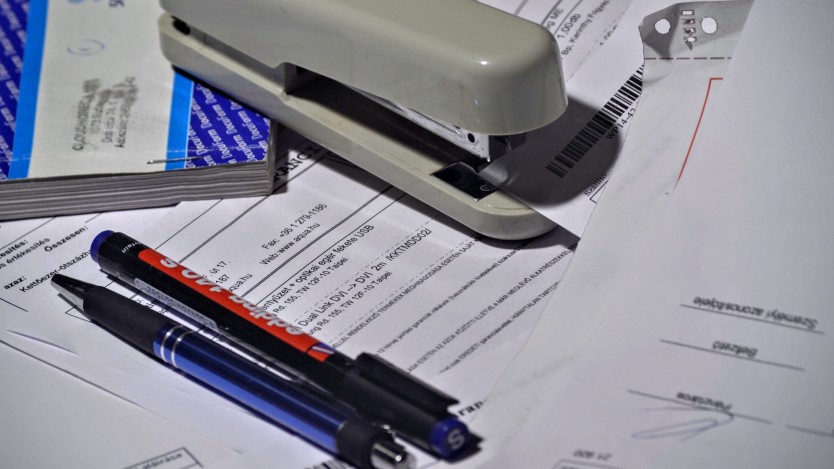Stationery, Promotional Material & Invoices
Clubs who have decided to incorporate and become a limited company are bound by the Companies Act 2006 and as such have certain statutory requirements when it comes to correspondence, promotional material and invoicing. Whilst these requirements are not mandatory for unincorporated clubs they are good business practice.
You must include your company’s name on all company documents, publicity and letters. This also includes email correspondence and most companies will show the required information in the email footer, automatically added when sent, or require all employees to use a consistent email footer which includes the following requirements.
On business letters, order forms, invoices and websites, you must show:
- the company registration number
- its registered office address
- where the company is registered (England and Wales, Scotland or Northern Ireland)
- the fact that it is a limited company (usually by spelling out the company’s full name including ‘Limited’ or ‘Ltd’)
- If you want to include directors’ names, you must list all of them.
For invoices there are further requirements for limited companies, however it is also good business practice for all clubs to include the following: –
The name and address of your business
For all businesses, it’s helpful also to include your contact details on an invoice, including your: name, phone number and email address. It is then easier for the customer to raise any queries about the invoice. If you’re a limited company, you’ll need to include your registered office address as well as your company registration number You’ll also need to show the formal registered name of the company, alongside any name which you’re using to trade.
The name and address of the company you’re invoicing
Once again, include a contact name if you have one so the invoice will reach the person who knows most about it – and is therefore most likely to pay it!
An invoice reference / invoice number
Your invoice number or reference should be unique to this invoice. That means you’ll have to keep a record of the numbers or references you’ve already used so that you don’t accidentally duplicate one. Many people just use a sequence of numbers, putting a few zeros in front of early invoice numbers so that they’ll all be the same length and easy to sort – so starting at, say, 0001 rather than just 1. You can include letters in an invoice reference if you want to. If you have a number of repeat customers, you might consider putting a few letters in front of numbers of indicate the client. This means you can reuse the numbers and only need look at the last invoice reference for that client when choosing the next one. So, for example, the first invoice issued to Aviva could be AVI001 and the first issued to Vodafone could be VOD001.
The date the goods or services were provided
Especially for VAT invoices, this is often otherwise known as the “supply date”.
A date for the invoice
This will generally be the date on which the invoice is created, not necessarily the date the goods or services covered by the invoices were provided.
Details of the products or services provided and their cost
You need to provide a clear description of what you’re invoicing for. This will usually mean a line by line list of each product or services you’ve provided, together with the cost of each. The clearer the description you provide, the less likely it is that a customer will need to contact you to query the invoice. That should mean you also have a better chance of the invoice being settled promptly.
A total amount for the invoice
This should be the total of the cost of all the individual products or services covered by the invoice. You should also note down any discount that you’ve agreed.
Payment terms for the invoice
The payment terms cover how long the customer has to pay, which will generally be based on the Terms & Conditions which have been agreed by the customer. For example, they might read “Payment should be made within 30 days”.
Details on how to pay the invoice
Obviously, it’s in your interests to make it easy for customers to pay you! As well as saying which payment methods you’ll accept, you need to include the following account details if you allow BACS/direct payments: Bank name, Account name, Account number and Sort code. With payment by cheque you’d only need to provide a payee name and some businesses still like making payments by cheque. However, in most cases it’s easier for the customer to make payment directly – and with direct payments you don’t have the extra hassle of banking the cheques received, alongside the fees that some banks charge for processing cheques on business accounts.
The customer’s purchase order number (if available)
If the customer has provided it, include this on your invoice so they can easily identify which purchase order the invoice relates to. Once again, this may improve the chances of being paid promptly.
What about VAT invoices?
If you’re VAT registered, there’s further information you’ll need to include. The best description is on HMRC’s website, but essentially you will also have to provide: your VAT Registration Number; and either the VAT rate and total amount of VAT charged (if all products and services are subject to VAT at the same rate); or, if not the amount of VAT and VAT rate charged on each item.
How should I format and send an invoice?
The most important thing is to lay your invoice out clearly with all the information required. In that way, you make it as easy as possible for the customer to pay your business.
Your invoice represents the identity of your business, and might be one of only a few documents that a customer will see. Make sure, therefore, that it reflects your brand in terms of fonts and colours as well as professionalism. Include a logo if your business has one. Proper branding may help to reinforce your business in the customer’s mind and thereby increase the chances of them ordering from you again.
For a limited company, the standard requirements relating to stationery apply to invoices. So, for example, if you choose to include the names of directors on your invoices, you must include the names of all directors.
While many businesses will submit a hard copy invoice by post, you could instead choose to send the invoice by email. It may help to speed things up, although if you do so it’s best practice the convert the invoice to a PDF document so that the customer is unlikely to be able to alter it!
By GCMA



